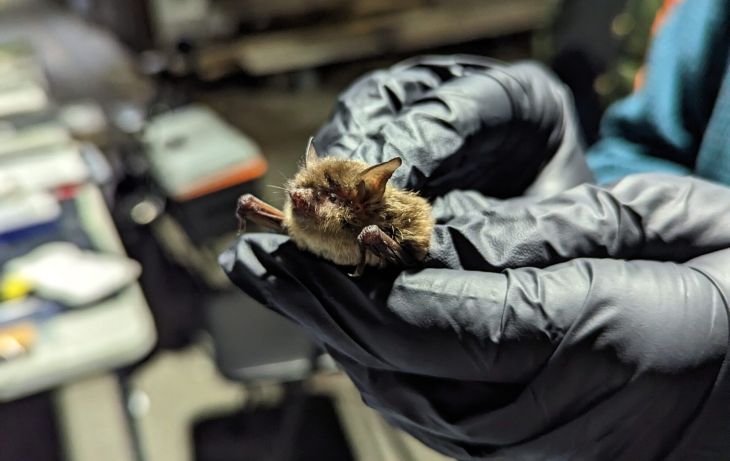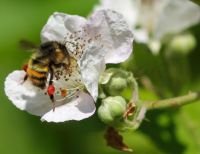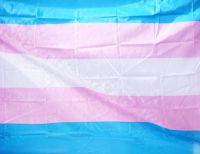Bats in Vancouver: UBC researchers to study secret city nightlife
Q&As
They live among us and eat pesky insects, but unless you’re armed with an ultrasonic microphone you may never notice our nocturnal neighbours: bats.
UBC researchers Dr. Matthew Mitchell (Faculty of Land and Food Systems) and Aaron Aguirre (Institute for Resources, Environment and Sustainability) want to bring these fascinating creatures out of the shadows, and will spend the summer collecting data on bats in Metro Vancouver.
They’re in a race against time: In early April, evidence of a deadly fungal disease called white-nose syndrome was found in B.C. for the first time.
We spoke with Mitchell and Aguirre about their study and why it matters.
What is white-nose syndrome and how does it impact bats?
Aaron Aguirre: White-nose syndrome is a fungal disease that has devastated bat populations in eastern North America, with mortality rates between 90 to 98 per cent, depending on the affected populations.
The fungus grows on their bodies and fur, and characteristically around their noses, and affects bats by disrupting their hibernation, or torpor. It’s like trying to sleep with athlete’s foot on your face— they become uncomfortable and rouse themselves out of torpor. This burns their fat stores and leaves them without enough energy to make it through the winter, leading to starvation or freezing to death.
Matthew Mitchell: It’s really hard on certain species like the little brown bat, which is an endangered species in Canada that is found in Metro Vancouver. They’re micro bats averaging eight grams in size, so they don’t have to lose a lot of fat reserves to suddenly find themselves in major trouble.
Why are you studying bats in Metro Vancouver?
MM: Our project is focused on understanding how bats use urban and natural landscapes around Metro Vancouver, and how this impacts bat diversity and abundance. Identifying these critical habitats is crucial for a few reasons. Three species of bats in B.C. are at risk, including the endangered little brown bat, which is found more in urban areas and roosts in man-made structures. Now that white-nose syndrome has been detected in bat droppings in the Kootenays, there is urgency to gather baseline data on bat species and populations to determine the impact of the disease.
In Vancouver, bats are not well-studied, and we need to know where they live, forage and how they use the urban landscape. This information will help us compare differences in their ecology and life histories across the province, and help inform conservation efforts.
We know they provide important ecosystem benefits by consuming thousands of insects, including mosquitos and potential pests in agricultural areas. But because they come out at night and make ultrasonic sounds we cannot hear, we often don’t notice them. There’s a real danger that their populations change or are lost without us noticing, so monitoring them is pretty important.
How are you going to study them?
AA: We’re using two methods to study the bats: acoustic surveys and mist netting. For the acoustic surveys, we’ll set up microphones in parks throughout Metro Vancouver to record bat calls and study how their activity levels change in more urban or more natural landscapes.
For the mist netting, we’ll use fine nets to catch bats in hotspots we identify, and then collect data like their forearm length, age, mass, and reproductive status. We’ll also attach small radio telemetry tags on them to track their movement and find where they’re roosting during the day. We hope this data will help us understand why bats select certain areas to roost and forage and how they move across the landscape. Lastly, we’ll be swabbing their wings to check for fungus, which is important for tracking the spread of white-nose syndrome.
We’ll be surveying at least 20 different parks across the region, including Pacific Spirit Park and Queen Elizabeth Park. We hope to run the surveys at least twice over the summer to compare changes in bat activity pre- and post-fledgling season, which is around mid-July, when bat pups start flying on their own.
What can the average person do to help protect bats in B.C.?
AA: Species like little brown bats provide a unique opportunity for us to look at how humans and wildlife can coexist and have mutually beneficial relationships with each other. Having guano around your house may not be great, but bats provide pest control and you’re providing them habitat. We call them the “invisible mammals” because it’s easy to miss them in our surroundings, so learning about them, keeping an eye out for them, letting researchers know when you spot them and putting up and maintaining things like bat boxes for them are great steps.
On May 10, Mitchell and Aguirre are hosting a ‘bat walk’ with UBC Farm that is open to the general public. Join them at UBC to learn about bats in Vancouver, visit a nearby roost and use ultrasonic microphones to listen for bat calls.
To register and learn more about Biodiversity Days 2023, hosted by the UBC Botanical Garden, visit: https://botanicalgarden.ubc.ca/news-events/events-activities/biodiversity-days-2023
For media interested in joining the walk, please email [email protected].














